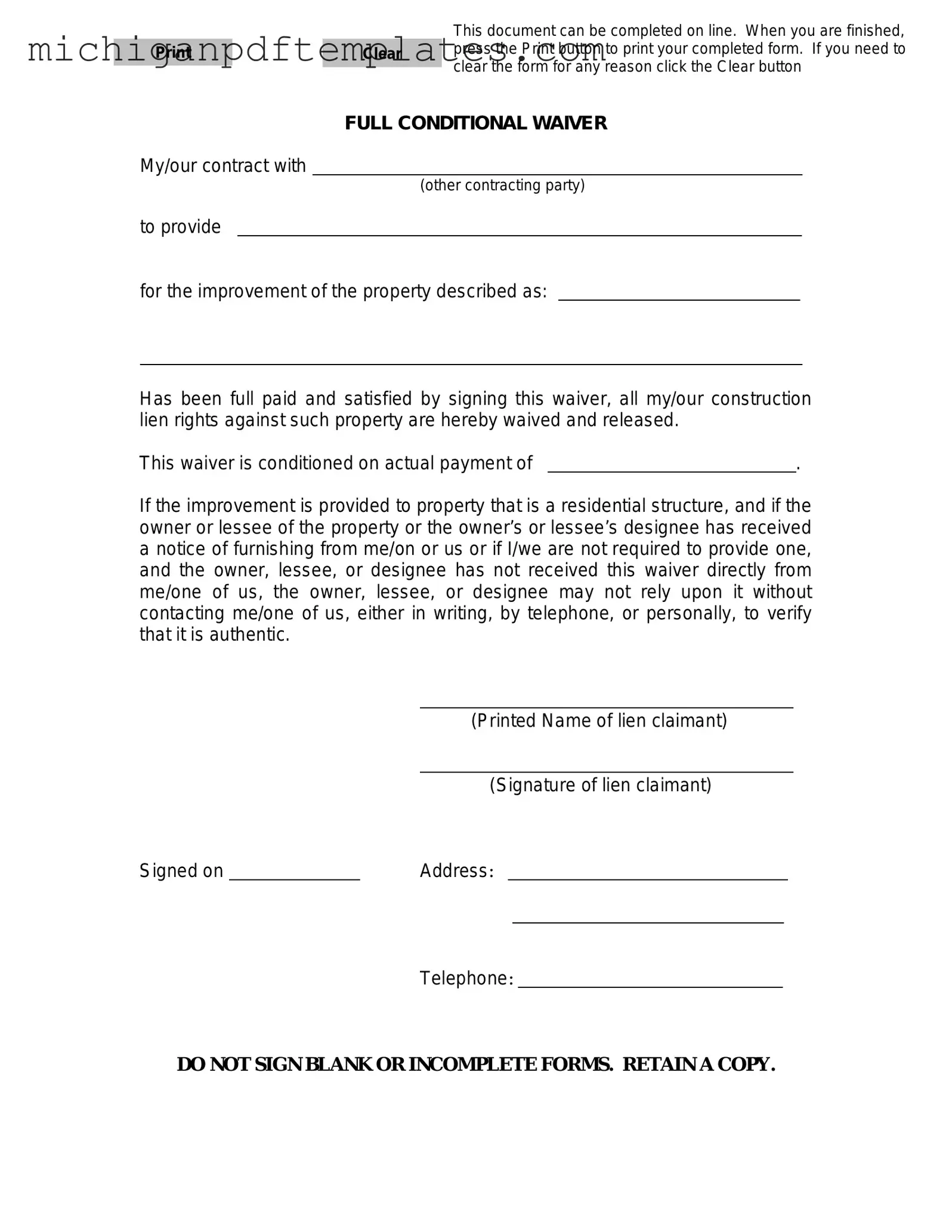Fill in Your Michigan Full Conditional Waiver Form
The Michigan Full Conditional Waiver form is a legal document that allows contractors and subcontractors to waive their construction lien rights against a property once they have received full payment for their services. By signing this waiver, individuals acknowledge that their lien rights are relinquished, contingent upon the actual payment being made. It's important to ensure that the form is completed accurately, as it provides essential protections for both parties involved in the transaction.
If you're ready to fill out the form, please click the button below.
Get Your Form Now
